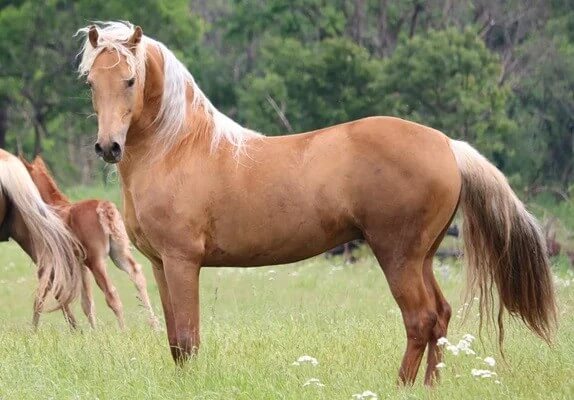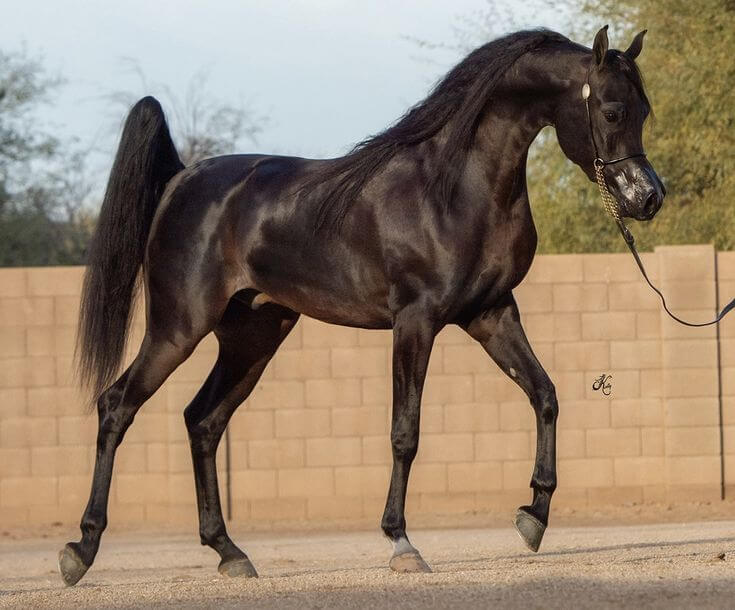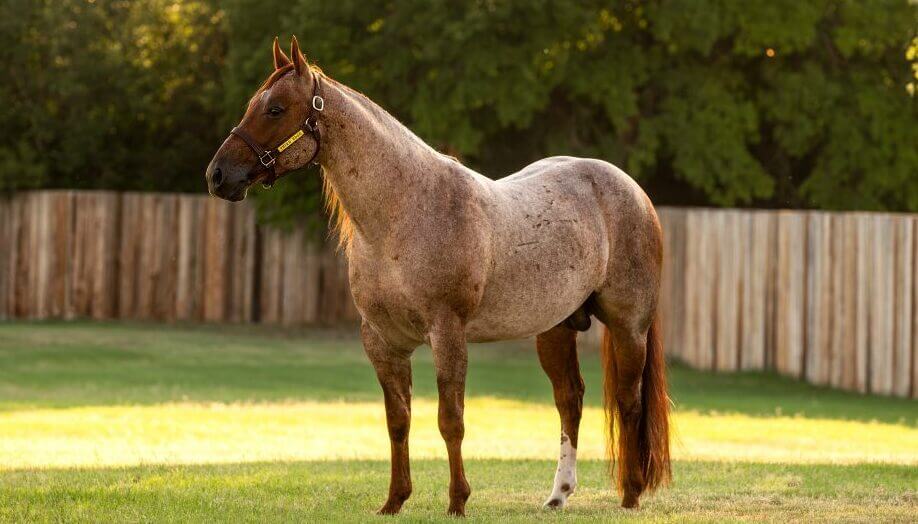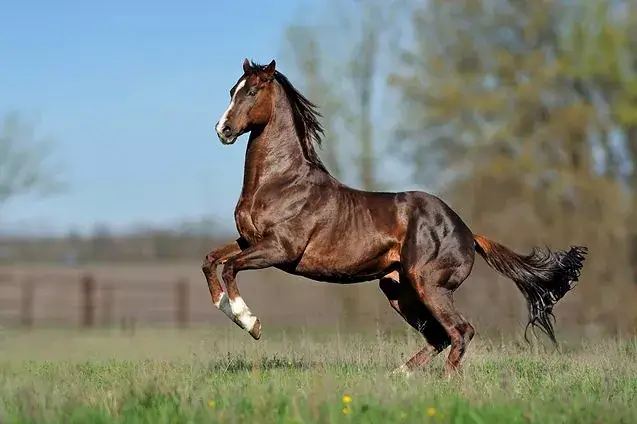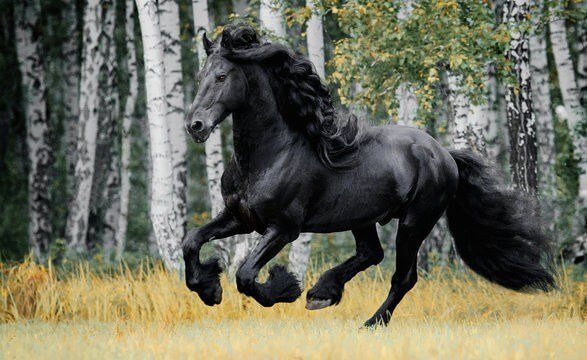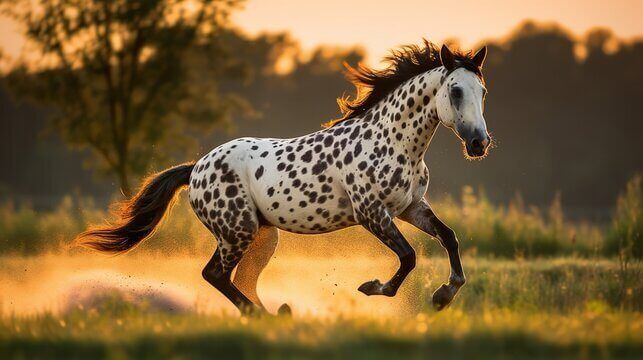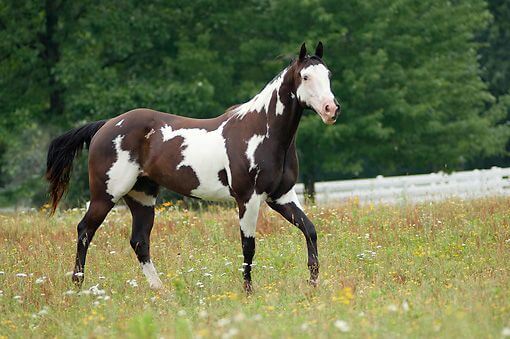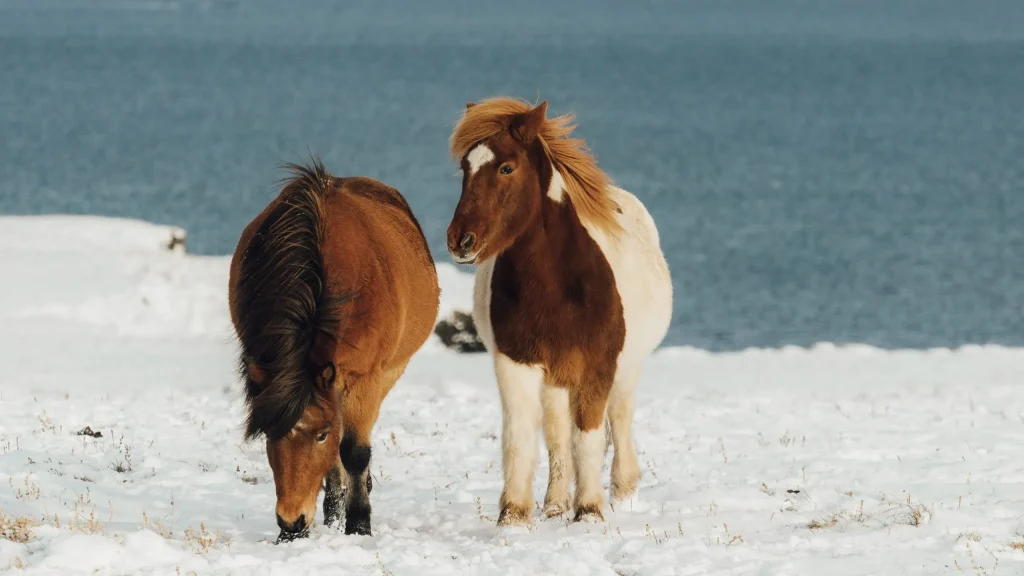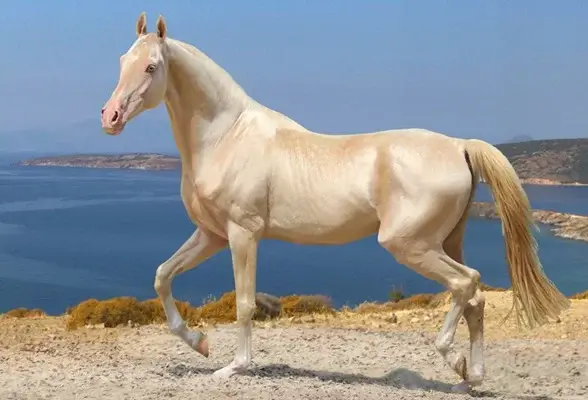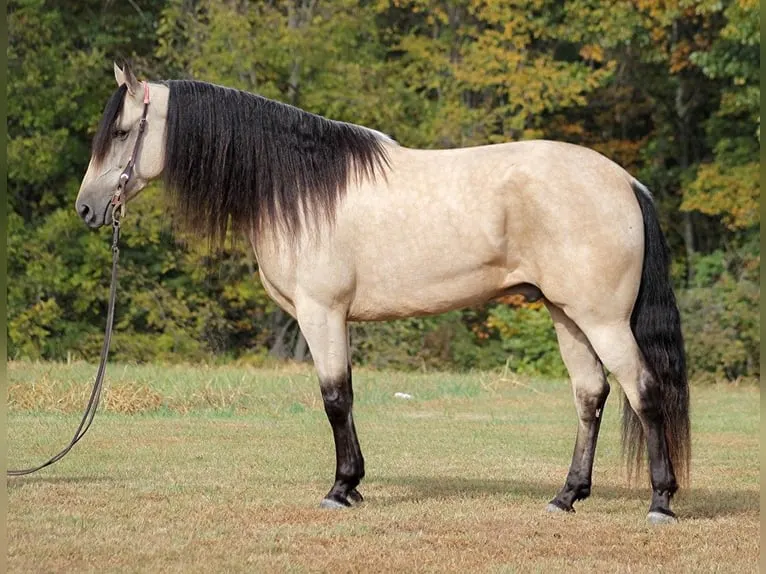🐎 Morgan Horse – America’s First Breed of Versatility and Grace
🌍 Introduction
The Morgan Horse holds a special place in American history as one of the first breeds developed in the United States. Known for its strength, beauty, and agreeable nature, the Morgan is a favorite for riders of all ages. Its versatility makes it suitable for everything from trail riding to dressage, from pulling carriages to being a cherished family companion.
📜 History and Origin
The story of the Morgan Horse begins in the late 1700s with a single stallion named **Figure**, later known as **Justin Morgan’s horse**. Bred in Vermont, Figure became the foundation sire of the Morgan breed, passing on his incredible traits—stamina, speed, and intelligence—to generations of offspring.
Morgans played crucial roles in American history, from farming and westward expansion to serving in the Civil War. Their contribution helped shape the nation’s equine culture.
🧬 Breed Characteristics
Morgan Horses are compact, muscular, and elegant. Here are some defining traits:
- Height: Typically 14.1 to 15.2 hands
- Weight: Around 900–1,100 pounds
- Colors: Most commonly bay, black, or chestnut, though all equine coat colors are accepted
- Build: Strong back, arched neck, and expressive face
Their proud posture and fluid movement make them stand out in any discipline.
🏇 Temperament and Personality
Morgans are beloved for their friendly and cooperative disposition. They are curious, confident, and deeply loyal to their handlers. Their intelligence and eagerness to please make training enjoyable and successful.
They’re especially great for families due to their gentle nature and consistent behavior around children and new riders.
🌄 Ideal Environment
Morgan Horses adapt well to various environments. They thrive in open pastures with shelter and room to roam. They’re hardy animals capable of handling both hot and cold climates.
A consistent routine with regular turnout, light training, and social interaction helps them stay happy and healthy.
🥕 Diet and Nutrition
Like most horses, Morgans require a balanced diet of hay or pasture grass, clean water, and mineral supplements. Because they are easy keepers, they don’t need excessive feed and may gain weight easily.
It’s important to monitor portion sizes and limit grain intake to prevent obesity and metabolic issues.
🩺 Health and Lifespan
Morgans are generally a healthy and long-lived breed. With proper care, many live well into their late 20s or early 30s. However, they may be prone to:
- 🦷 Dental issues (due to age or jaw structure)
- 🐴 Cushing’s disease in older horses
- 🐎 Laminitis occurs if overfed or under-exercised
Regular vet checkups, dental care, and proper hoof maintenance are key to a long, healthy life.
🎠 Common Uses
Morgans are incredibly versatile and excel in a wide range of disciplines:
- 🏇 Dressage and show jumping
- 🏞️ Trail and endurance riding
- 🚜 Driving and pulling carriages
- 🎡 Pleasure riding and family use
Their adaptability makes them a favorite among horse lovers with diverse riding interests.
🧽 Grooming and Maintenance
Morgan Horses are relatively low-maintenance but benefit from regular grooming:
- 🪮 Weekly brushing to keep coats shiny and healthy
- 🧼 Bathing as needed, especially after workouts
- 🐾 Regular hoof cleaning to avoid thrush
These activities help build trust and connection between the horse and the owner.
👨👩👧👦 Compatibility with People
Morgans are incredibly people-friendly. Their calm, intelligent demeanor makes them excellent horses for beginners, children, and therapeutic programs.
They enjoy companionship and form strong bonds with both humans and fellow horses, thriving in social and stimulating environments.
🌍 Conservation Status
The Morgan Horse is not endangered, but its numbers are carefully monitored to preserve the breed’s integrity. Organizations like the **American Morgan Horse Association (AMHA)** work tirelessly to promote, register, and protect the breed’s future.
🎉 Fun Facts About Morgan Horses
- 🧬 All Morgan Horses trace back to one stallion: Figure, born in 1789.
- 🎖️ Morgans served both Union and Confederate forces during the Civil War.
- 📚 They are the official state animal of Vermont and the state horse of Massachusetts.
- 🎥 Morgan Horses have appeared in films and literature due to their elegant looks.
❓ Frequently Asked Questions
Q1: Are Morgan Horses good for beginners?
A: Absolutely. Their calm demeanor, intelligence, and reliability make them ideal for first-time riders and children.
Q2: How long do Morgan Horses live?
A: With proper care, they can live between 25 to 30 years, with some living even longer.
Q3: Do Morgan Horses require a special diet?
A: No special diet is needed, but they are easy keepers and should be fed carefully to avoid weight gain.
Q4: Can Morgan Horses compete in shows?
A: Yes! They excel in dressage, jumping, Western events, and even carriage driving competitions.
Q5: Are Morgans social with other horses?
A: Yes, they are very social and enjoy the company of other horses as well as humans.
✅ Conclusion
The Morgan Horse is a true American treasure—versatile, intelligent, and beautiful. Whether you’re looking for a show horse, a family companion, or a trail partner, the Morgan fits the role perfectly. With a rich history and a heartwarming personality, this breed continues to inspire horse lovers around the world.
